Solar Energy in India

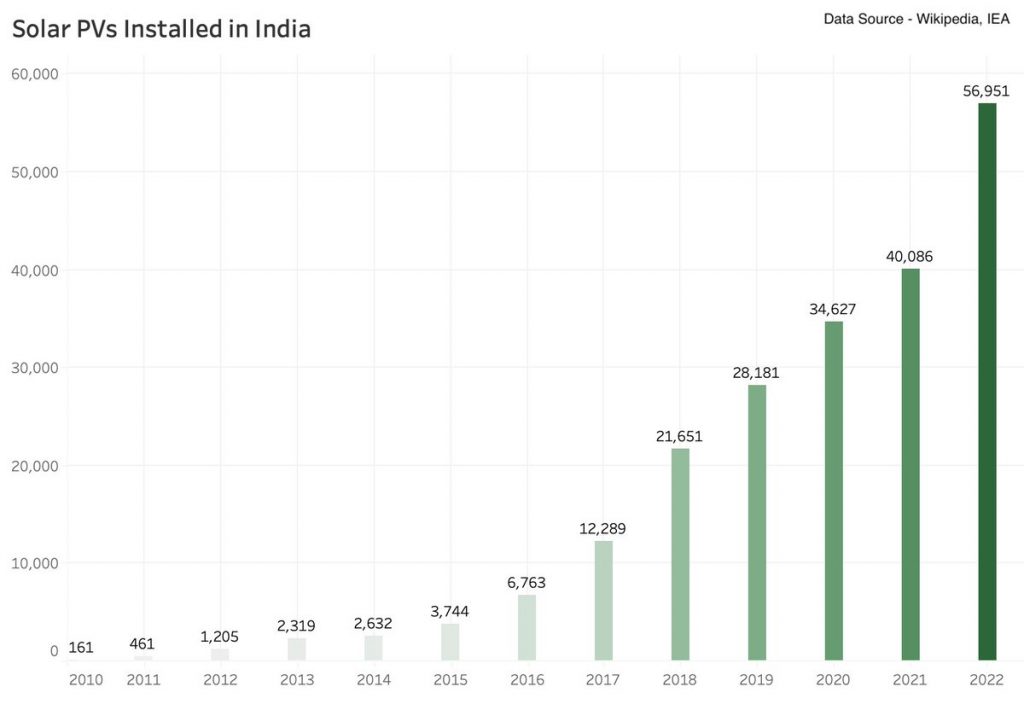
Introduction | Why the emphasis on Solar energy?
Over the past decade, India has been steadily adding solar power capacity. We have taken ambitious targets to reduce global warming. But why? Doing our bit to save the world is one thing, but there are more underlying reasons. Let’s understand them one by one.
Reason 1 – Costs
Money makes the world go round. Economic incentives are the most efficient incentives. No matter how much governments push for clean energy, until clean energy costs more than coal and oil, adoption will remain slow. Over the years, with a lot of investment in research and technology, the cost of producing electricity from solar energy has reduced a lot. In 2018, the average solar auction price in India actually dropped below the average tariff charged by NTPC.
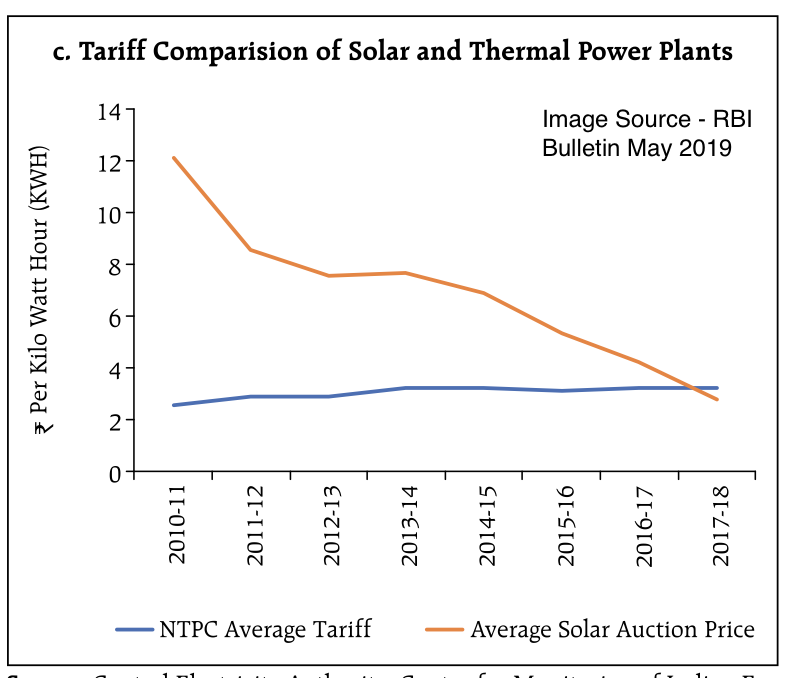
In 2020, the international energy agency actually declared solar energy as the cheapest energy in history. And in India, the cost of installing solar capacity is actually the cheapest in the world. It’s pure economics.
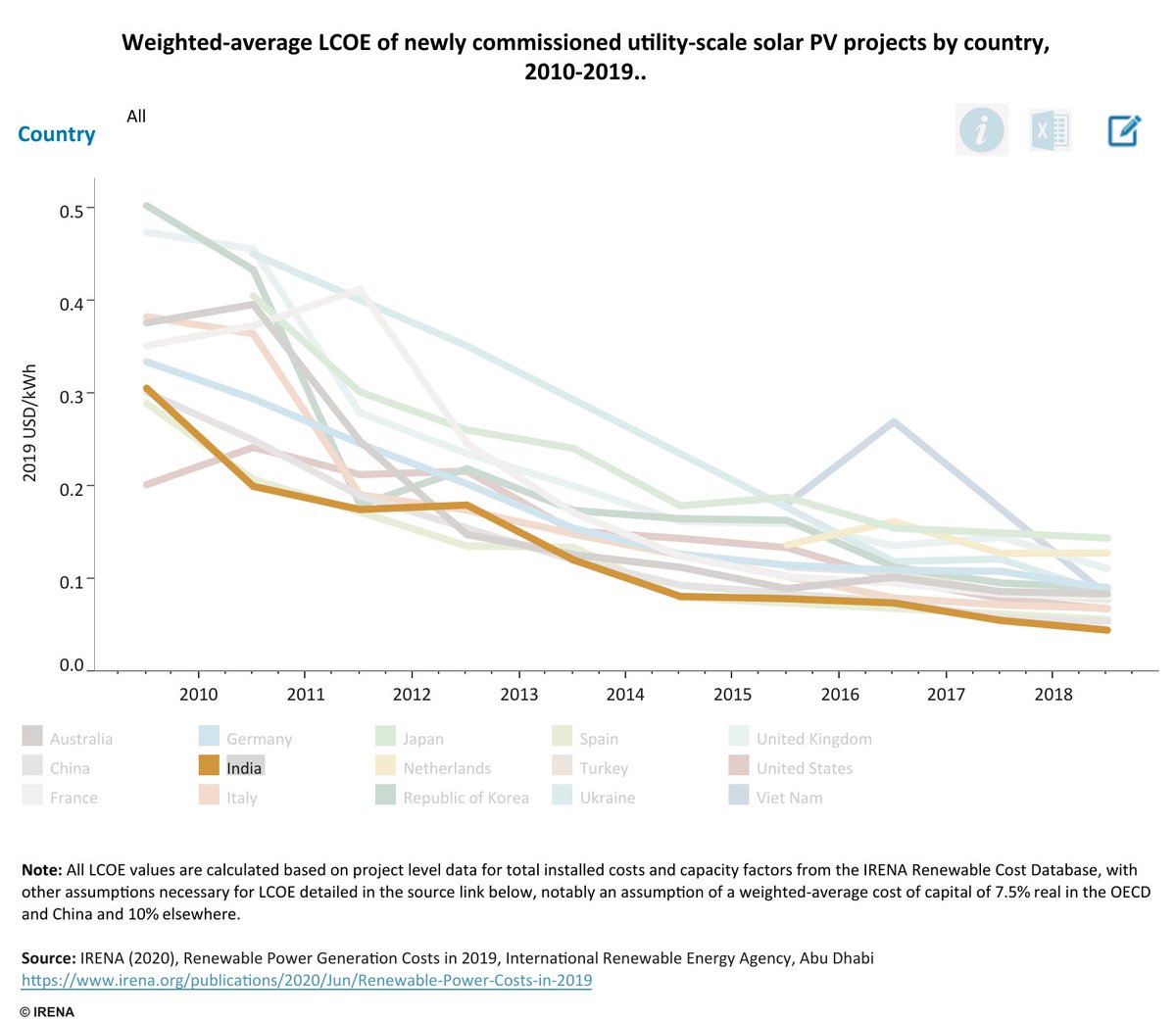
Reason 2 – Energy security
Renewable energy is, of course, good for the environment, but it also has a lot of potential in energy security. Being an oil-importing country, our economy is particularly vulnerable to oil price shocks. Any sudden jump in oil prices affects our currency, deficit, inflation, supply of electricity, etc.
Reducing dependency on oil is a big reason behind the push for biofuels, natural gas, and renewable energy. Natural gas currently makes up ~6% of our energy supply and is still quite small. But currently, the infrastructure is yet to be properly laid out.
And due to the tariff structures, by the time gas reaches consumers, the prices are almost 2x of wholesale prices. Solar energy offers an alternative to fossil fuels and natural gas.
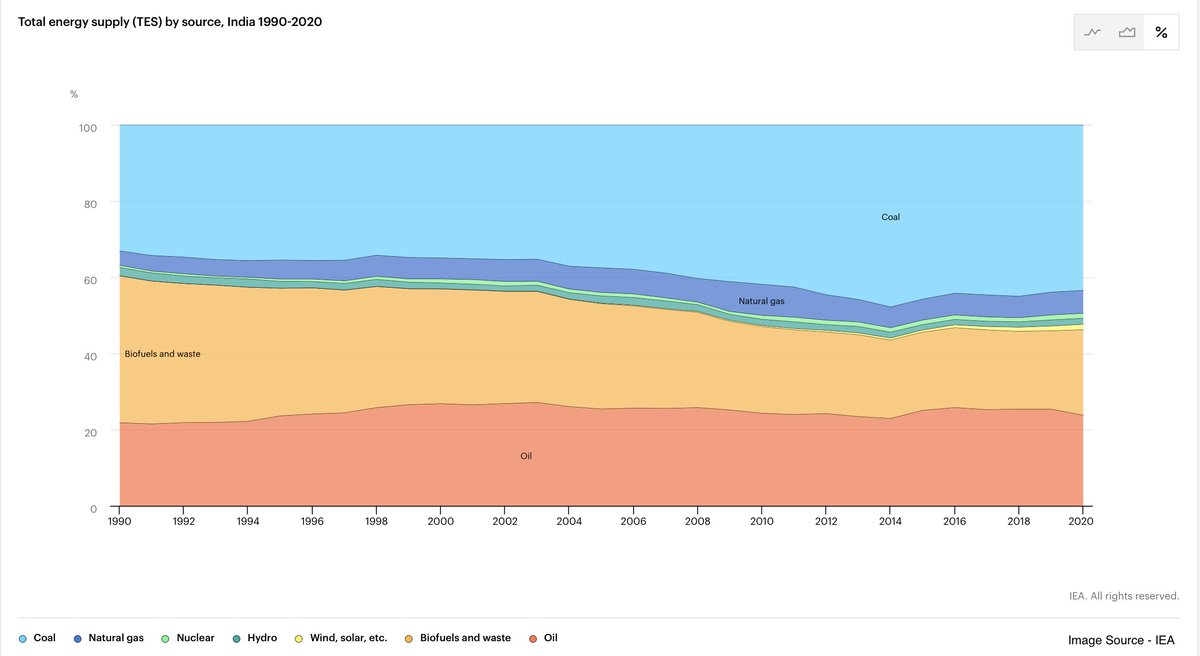
Reason 3 – Soft Power
Until now, all countries have grown using fossil fuels and then transitioned to “clean energy”. If India pulls this off, it can create a new path for itself and all countries that follow it.
Under One Sun One World One Grid (OSOWOG), India also proposed a transnational grid through which countries can transfer renewable energy to each other. This leadership in renewable energy earns India a lot of soft power in geopolitics.
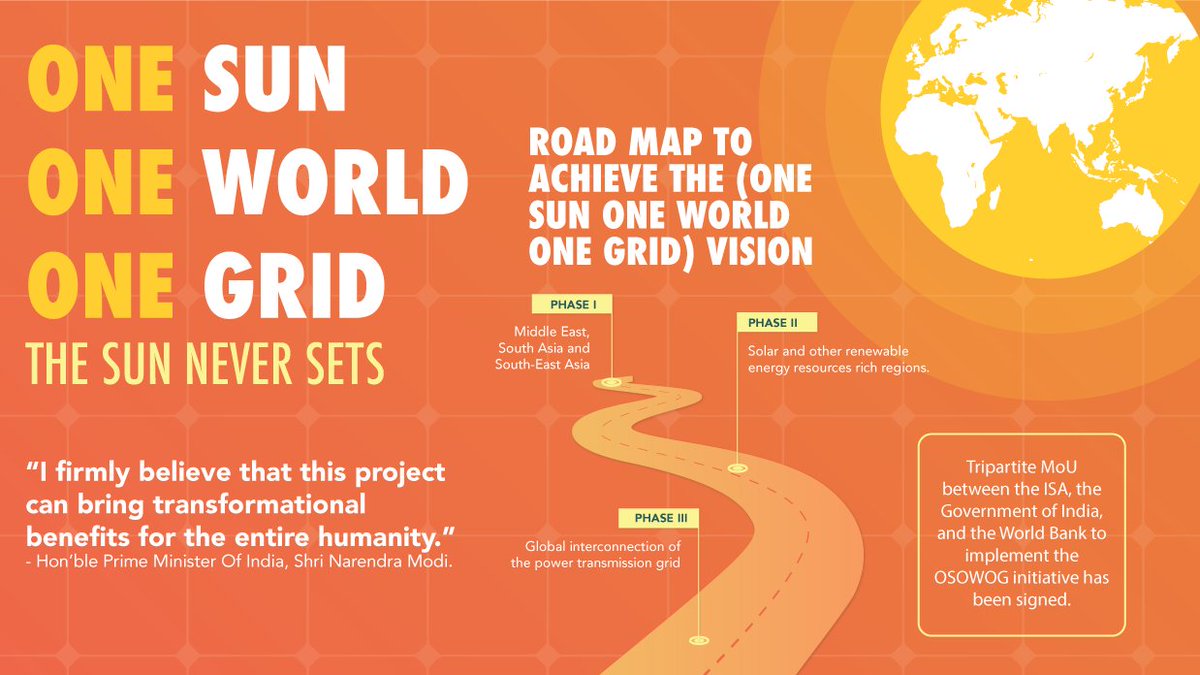
Reason 4 – Government Push
The subsidies and benefits provided by the government under the National Solar Mission have also been good reasons for adoption.
The main costs involved in energy generation are
- Fixed costs – Cost of land acquisition, construction cost, transmission and distribution system.
- Variable costs – Manpower, regulatory costs, fuel.
Land acquisition is one of the biggest issues in Indian infrastructure projects.
Under the Solar Park Policy, state governments identify suitable large tracts of land (generally government waste/non-agricultural land) in order to speed up the acquisition process for setting up solar parks. And due to government push, the solar parks constructed in India are of sufficient scale and economically efficient. With foreign investment, technology is also improving.
Reason 5 – Energy Demand
India’s electricity consumption is 684 kWh per capita.
US’s electricity consumption is 13,246 kWh (19x of India) per capita
India’s per capita consumption is still quite low. India has increased access to electricity to ~100% only recently. As India’s incomes grow, so will the purchase of appliances and demand for electricity. Business requirements increase.
While this would seem like a disadvantage, it’s actually a unique advantage in energy adoption. India doesn’t have to replace existing capacity. It just needs to prioritise solar capacity addition, which is cheaper.
Reason 6 – Market dynamics
The business model of thermal power plants is based on operating leverage. The plants have high fixed costs and leverage high volumes to keep costs down. The cost of electricity depends heavily on capacity utilisation and the volume of electricity sold.
Power Distribution Companies (DISCOM) enter long-term contracts with these Power plants called Power Purchase Agreements. Power plants that have more long-term agreements are generally better off.
The price of electricity in the contracts was decided according to the Feed-In-Tariff (FIT) and not demand and supply. This Feed-In-tariff is determined based on the cost of electricity plus a small margin.
This meant that traditional power plants had no incentive to innovate and reduce costs. And since these contracts were long-term, new players could not enter the space. If they did, the volumes were not substantial enough to achieve economies of scale.
What changed?
In 2003, the electricity act was passed, where the Feed-in-Tariff price was decided based on the reverse auction (lowest prices) instead of Cost plus margin. This gave new players a competitive edge.
DISCOMs also had to purchase a minimum % of their power requirement from renewable energy sources. As technology improved, solar energy ended up becoming more competitive, and with declining volumes, thermal power plants suffered.
There have been instances of DISCOMs not honouring their commitments of buying electricity under PPAs, and thermal power plants selling power on the spot market at below-PPA negotiated prices.
This distress in the energy sector was the perfect entry point for solar energy producers.
Under the 2003 act, a formal energy market was also set up where producers, distributors, traders, and consumers could trade contracts for power. While long-term contracts remained the main volume drivers, trading of short contracts picked up.
New players like Independent power producers (ReNew Power, Adani, Hero, Mytrah, etc.), open-access consumers, and private distributors entered the market. Buying and selling volume increased, efficiency improved, and the volatility of electricity prices was reduced.

Reason 7 – General Awareness of solar energy
Awareness about EVs and rooftop solars has increased. Even normal residents of housing societies are adopting rooftop solars. They make financial sense, are better for the environment and come with subsidies from the government.
Conclusion
India added the 3rd highest solar capacity in 2021, just behind the US and China. It is the cheapest solar power producer in the Asia Pacific region. It has a lot of reasons to focus on renewable energy and is well on its way to becoming a global leader!
What do you think?




